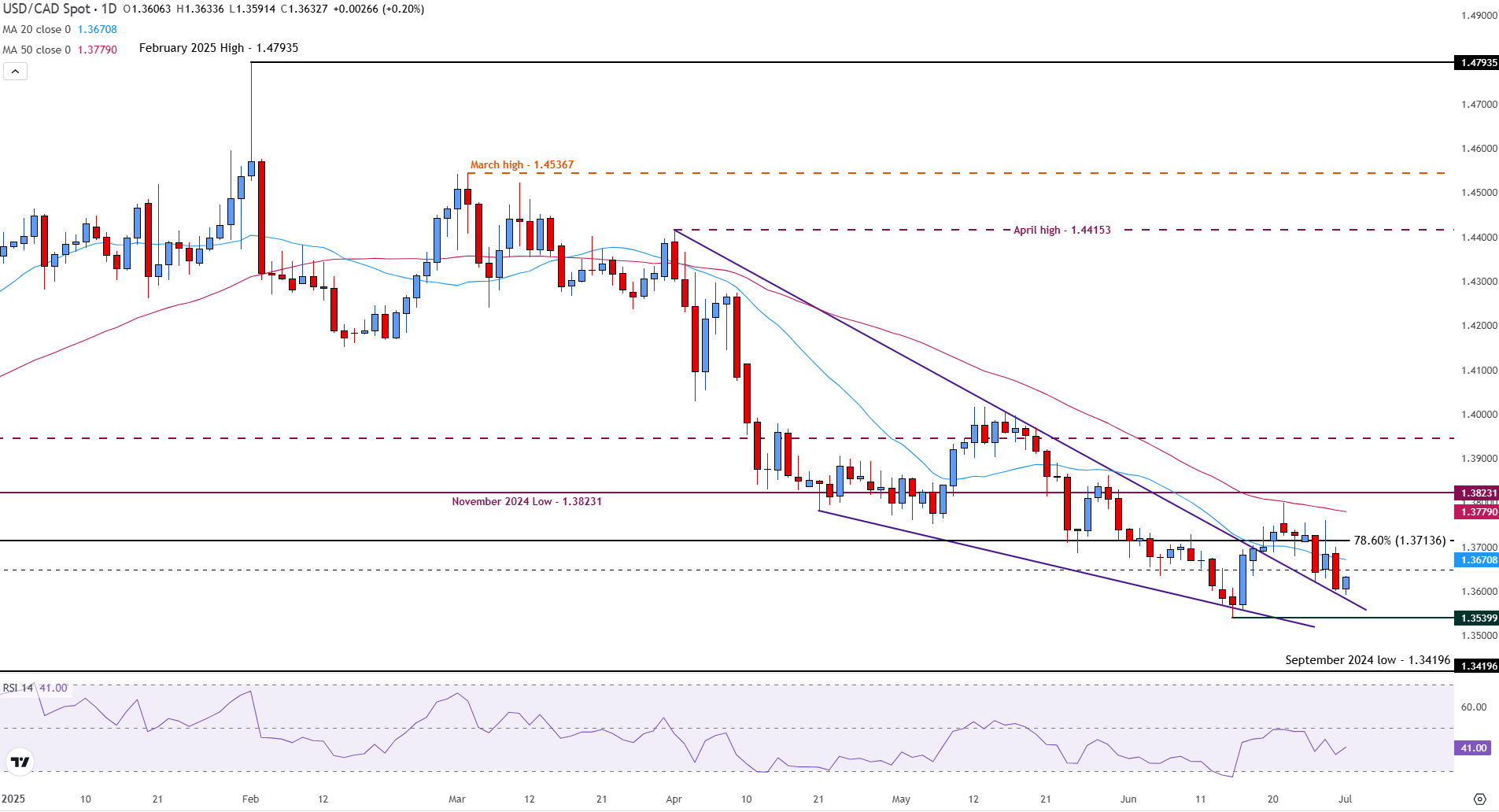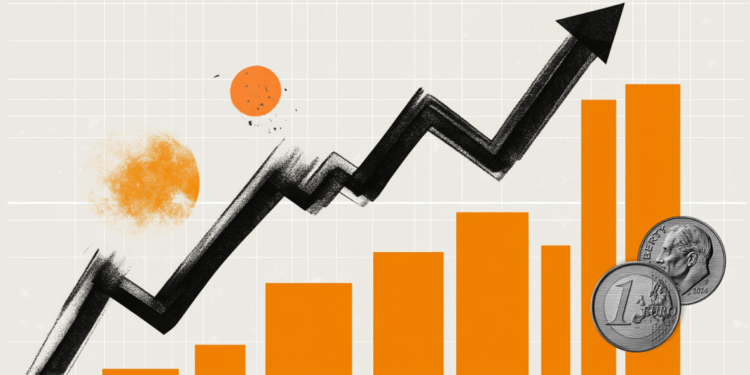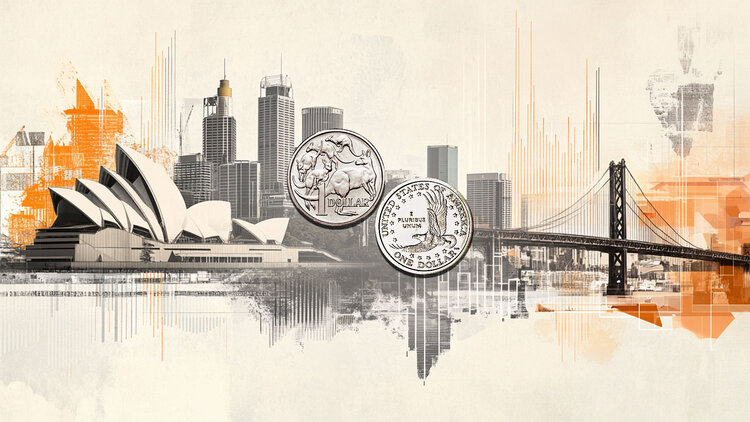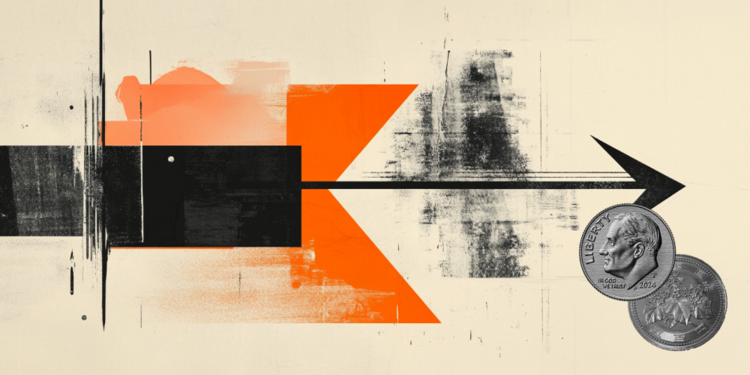- The USD/CAD rises as Powell’s comments in the ECB forum increase the expectations of a rate cut in September.
- The president of the FED, Jerome Powell points out that “while the US economy is in good shape, the prudent is to wait.”
- The manufacturing PMI of the US ISM and Jolts employment data exceed expectations, reflecting a more resistant US economy.
The Canadian dollar (CAD) is falling slightly against the US dollar (USD) on Tuesday, while the operators digest the latest comments from the president of the Federal Reserve (Fed), Jerome Powell.
The speakers of the central banks meet in the European Central Bank forum (ECB) in Sintra, Portugal, providing information on monetary policy.
From this moment on, the USD/CAD remains about 1,3640, since Powell is still committed to waiting for additional signs of inflationary pressures before trimming rates.
“While the US economy is in good shape, we believe that the prudent is to wait and learn more and see what those effects could be,” Powell said.
Until now, Powell has adhered to the cautious script, but investors are aware that this could quickly change if the data dictates otherwise.
In addition, Powell stated that “it will depend on the data, and we are going to meeting by meeting.” “I would not rule out any meeting or put it directly on the table. It will depend on how the data evolves.”
These comments suggest that the Fed does not rush to cut rates, increasing the potential of a cut in September. With the data of the ISM manufacturing PMI and Jolts of the US, overcoming the expectations, the US resilient data continue to support a more dependent on the data, providing an impulse to the USD/CAD.
The ISM manufacturing PMI and Jolts employment numbers reflect a resilient American economy
Two very observed American economic reports published in the US on Tuesday have helped relieve concerns about the US economy.
The first is the Index of Purchasing Managers (PMI) of manufacturing of the Supply Management Institute (ISM). The forecast was 48.8, which falls into contraction territory, insinuating weakness in the industrial sector. June data came above expectations in 49, going up from 48.5 in May.
The second is the Survey of Employment and Labor Rotation (Jolts), where economists waited around 7.3 million vacancies as of May 31. On the other hand, the last report revealed that employment vacancies increased to 7,769 million, reflecting an American resilient labor market.
Together, these two data points provide a solid snapshot of both the demand for goods and the demand for labor, two key components of the US economy.
Technical analysis of the USD/CAD: The CAD remains supported above the psychological support in 1,3600
The USD/CAD daily chart shows that the body continues to operate under pressure on Tuesday.
The prices currently remain below the simple mobile average (SMA) of 20 days in 1,3670 and the 50 -day SMA around 1,3779.
The pair had recently broken above a descending channel, but since then it has retreated, suggesting that the downward trend can continue.
The key support is at the psychological level of 1,3600, whose rupture could open the door to a minimum of June 1,3539. An additional fall could potentially point to the minimum of September in 1,3419.
USD/CAD DAILY GRAPH

Key resistance levels to observe include the Fibonacci level of 78.6% of the September-February Trend, located in 1,3714. The 20 and 50 days Smas are located above, followed by the minimum of November in 1,3823.
The Relative Force Index (RSI) in 40 reinforces the bearish impulse without entering over -sales territory.
A sustained movement above 1,3670, particularly beyond the 50 -day SMA, would be necessary to change the short -term perspective to Alcista.
US dollar FAQS
The US dollar (USD) is the official currency of the United States of America, and the “de facto” currency of a significant number of other countries where it is in circulation along with local tickets. According to data from 2022, it is the most negotiated currency in the world, with more than 88% of all global currency change operations, which is equivalent to an average of 6.6 billion dollars in daily transactions. After World War II, the USD took over the pound sterling as a world reserve currency.
The most important individual factor that influences the value of the US dollar is monetary policy, which is determined by the Federal Reserve (FED). The Fed has two mandates: to achieve price stability (control inflation) and promote full employment. Its main tool to achieve these two objectives is to adjust interest rates. When prices rise too quickly and inflation exceeds the 2% objective set by the Fed, it rises the types, which favors the price of the dollar. When inflation falls below 2% or the unemployment rate is too high, the Fed can lower interest rates, which weighs on the dollar.
In extreme situations, the Federal Reserve can also print more dollars and promulgate quantitative flexibility (QE). The QE is the process by which the Fed substantially increases the flow of credit in a stuck financial system. It is an unconventional policy measure that is used when the credit has been exhausted because banks do not lend each other (for fear of the default of the counterparts). It is the last resort when it is unlikely that a simple decrease in interest rates will achieve the necessary result. It was the weapon chosen by the Fed to combat the contraction of the credit that occurred during the great financial crisis of 2008. It is that the Fed prints more dollars and uses them to buy bonds of the US government, mainly of financial institutions. Which usually leads to a weakening of the US dollar.
The quantitative hardening (QT) is the reverse process for which the Federal Reserve stops buying bonds from financial institutions and does not reinvote the capital of the wallet values that overcome in new purchases. It is usually positive for the US dollar.
Source: Fx Street
I am Joshua Winder, a senior-level journalist and editor at World Stock Market. I specialize in covering news related to the stock market and economic trends. With more than 8 years of experience in this field, I have become an expert in financial reporting.







